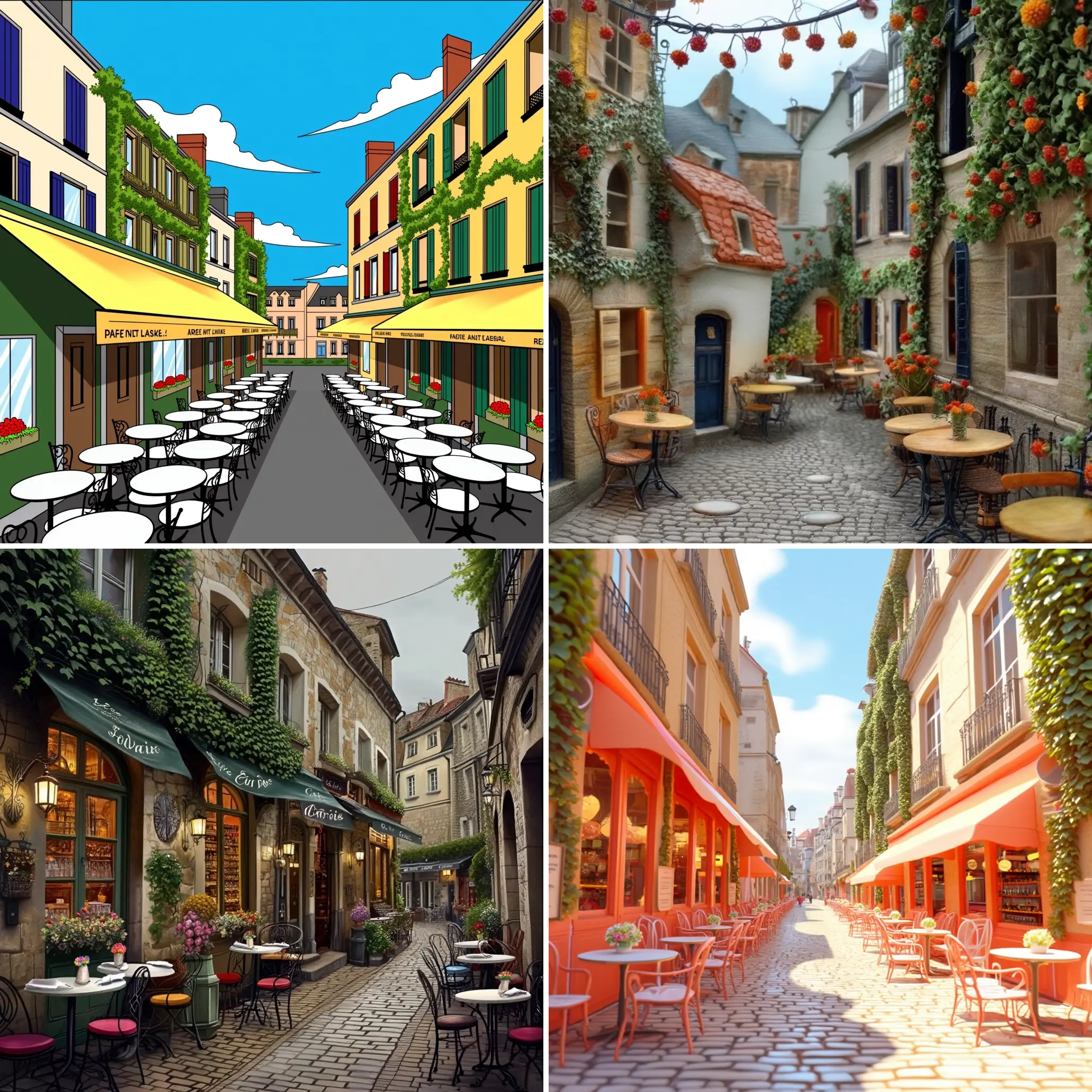ComfyUI Node: InstantCharacter Load Model
InstantCharacterLoadModel
CategoryInstantCharacter
jax-explorer (Account age: 899days) Extension
ComfyUI-InstantCharacter Latest Updated
2025-05-11 Github Stars
0.17K
How to Install ComfyUI-InstantCharacter
Install this extension via the ComfyUI Manager by searching for ComfyUI-InstantCharacter- 1. Click the Manager button in the main menu
- 2. Select Custom Nodes Manager button
- 3. Enter ComfyUI-InstantCharacter in the search bar
Visit ComfyUI Online for ready-to-use ComfyUI environment
- Free trial available
- 16GB VRAM to 80GB VRAM GPU machines
- 400+ preloaded models/nodes
- Freedom to upload custom models/nodes
- 200+ ready-to-run workflows
- 100% private workspace with up to 200GB storage
- Dedicated Support
InstantCharacter Load Model Description
Facilitates loading InstantCharacter models with custom paths for AI art generation, supporting CPU offloading and memory management.
InstantCharacter Load Model:
The InstantCharacterLoadModel node is designed to facilitate the loading of InstantCharacter models, which are used in AI art generation to create and manipulate character representations. This node allows you to specify custom model paths, enabling flexibility in choosing different model configurations and components. By leveraging this node, you can efficiently load models that are tailored to your specific artistic needs, whether you're working with pre-trained models or experimenting with new configurations. The node supports advanced features such as CPU offloading, which can help manage memory usage effectively, making it a valuable tool for artists working with limited hardware resources. Overall, the InstantCharacterLoadModel node is essential for integrating sophisticated character models into your creative workflow, providing both versatility and efficiency.
InstantCharacter Load Model Input Parameters:
base_model_path
This parameter specifies the path to the base model that you wish to load. It allows you to input a custom path as a string, giving you the flexibility to choose different model versions or configurations. The default value is set to "models/FLUX.1-dev", and there are no explicit minimum or maximum values, as it depends on the available models in your environment.
image_encoder_path
This parameter defines the path to the primary image encoder model. It is crucial for processing and encoding image data, which is a fundamental step in character generation. The default path is "models/google/siglip-so400m-patch14-384", and like the base model path, it accepts a string input with no specific range limitations.
image_encoder_2_path
Similar to the image_encoder_path, this parameter specifies the path to a secondary image encoder model. It provides additional encoding capabilities, potentially enhancing the model's performance. The default value is "models/facebook/dinov2-giant", and it also accepts a string input without defined minimum or maximum values.
ip_adapter_path
This parameter indicates the path to the IP adapter, which is a component used to adapt the model for specific tasks or datasets. The default path is "models/InstantCharacter/instantcharacter_ip-adapter.bin", and it requires a string input. This parameter is essential for customizing the model's behavior and improving its adaptability.
cpu_offload
This boolean parameter determines whether CPU offloading is enabled. When set to True, it allows the model to offload computations to the CPU, which can help manage GPU memory usage and is particularly useful for systems with limited GPU resources. The default value is False, meaning that offloading is disabled by default.
InstantCharacter Load Model Output Parameters:
INSTANTCHAR_PIPE
The output parameter INSTANTCHAR_PIPE represents the loaded InstantCharacter pipeline. This pipeline is a comprehensive model setup that includes all the specified components and configurations, ready for use in character generation tasks. It is crucial for executing the model's functions and producing the desired artistic outputs.
InstantCharacter Load Model Usage Tips:
- Ensure that the paths specified for the model and encoders are correct and accessible from your environment to avoid loading errors.
- Consider enabling
cpu_offloadif you encounter memory limitations on your GPU, as this can help manage resources more effectively. - Experiment with different model and encoder configurations to find the setup that best suits your artistic style and project requirements.
InstantCharacter Load Model Common Errors and Solutions:
"Model path not found"
- Explanation: This error occurs when the specified model path does not exist or is incorrect.
- Solution: Double-check the path for typos and ensure that the model file is located in the specified directory.
"Failed to load image encoder"
- Explanation: This error indicates that the image encoder path is incorrect or the file is missing.
- Solution: Verify the path and ensure that the image encoder file is present and accessible.
"CPU offload not supported"
- Explanation: This error may occur if the system does not support CPU offloading.
- Solution: Check your system's capabilities and ensure that the necessary libraries and drivers are installed for CPU offloading. If not supported, consider upgrading your hardware or disabling the
cpu_offloadoption.
InstantCharacter Load Model Related Nodes
RunComfy is the premier ComfyUI platform, offering ComfyUI online environment and services, along with ComfyUI workflows featuring stunning visuals. RunComfy also provides AI Playground, enabling artists to harness the latest AI tools to create incredible art.



